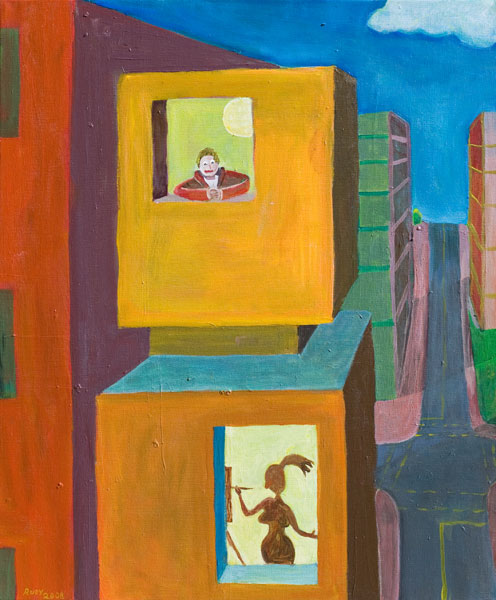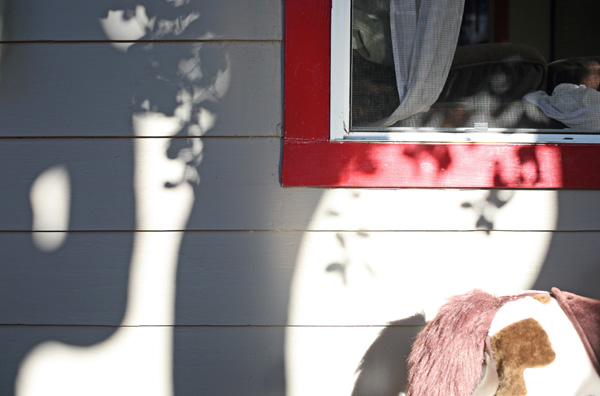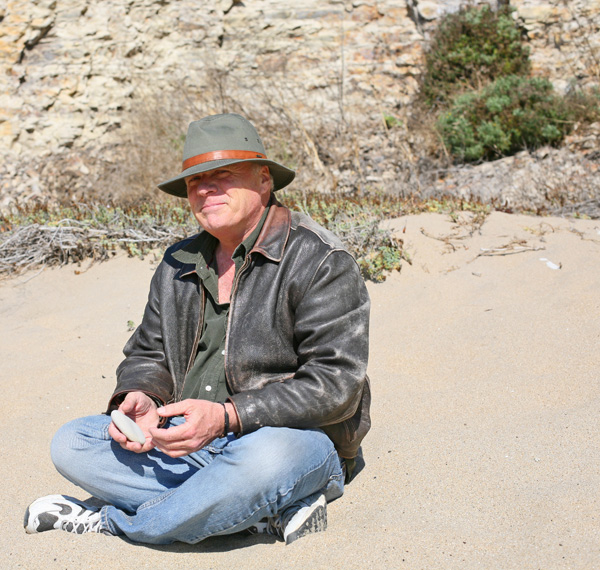I finished a new painting yesterday, “Romeo and Juliet.” It has kind of a New Yorker cover look to it. It emerged from a starting pattern of abstract squares that I painted to use up the paint left over from “Owl Creek.”

For I think the first time, I did the whole one-point perspective thing, drawing lines to the vanishing point, so as to determine the lines of the buildings’ edges. Unless you have buildings or streets or other man-made structures, you can get along pretty well without formal perspective most of the time.
Dig how Romeo has the Moon inside his room!
The composition is inspired by Wayne Thiebaud’s street scenes of the 1980s, not that I’d care to compare our work side to side! Something very cool about Thiebaud is that he goes beyond Renaissance perspective and uses multiperspective, that is, he has different parts of his paintings be converging in on totally different vanishing points.
My friend Jon Pearce came over to paint with me…he’s new to the game, but he had fun. He called his picture “Encroaching Weirdness,” picking that phrase from something I said.

On a different front, here’s a video segment of Bill Gosper giving a computer-animated talk on some of his discoveries on topics such as pi, the Pythagorean theorem, and cosmically large simulations of the Game of Life. The sound quality totally eats it—failing to capture the cracked, manic energy of the G-man’s voice—but the graphics are lovely.
Gosper, by the way, was the very first person to be giving talks like this, all the way back in the early to mid 1980s. At that time nobody but him had the ability to throw mathematical graphics onto the big screen. He used to use a computer projector called Light Valve, which painted its pictures with jets of dyed spermaceti whale oil inside a tube illuminated by an arc-light…I kid you not.

I really enjoy getting away from the computer and just smearing the paint around. Jon took this picture of me, note that it’s a slightly earlier version of the painting.

One more link: Fellow computerist and artist Robert X. Cadena turned me onto his image-rich blog.



























